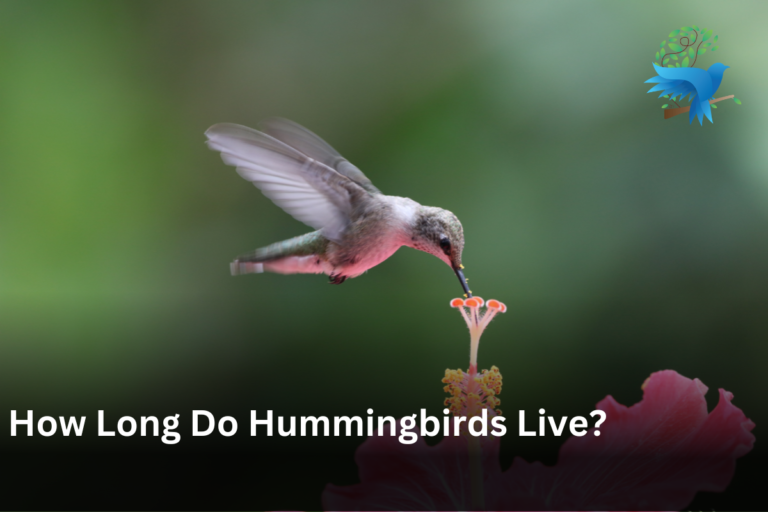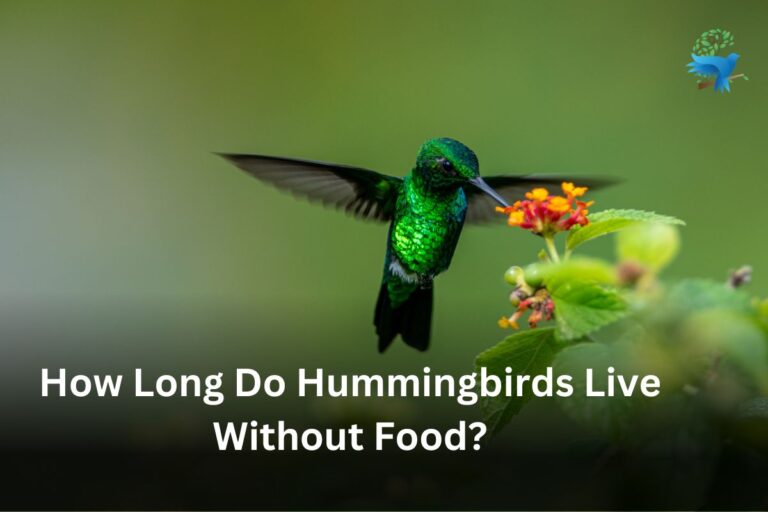Types of Hummingbirds in New Hampshire
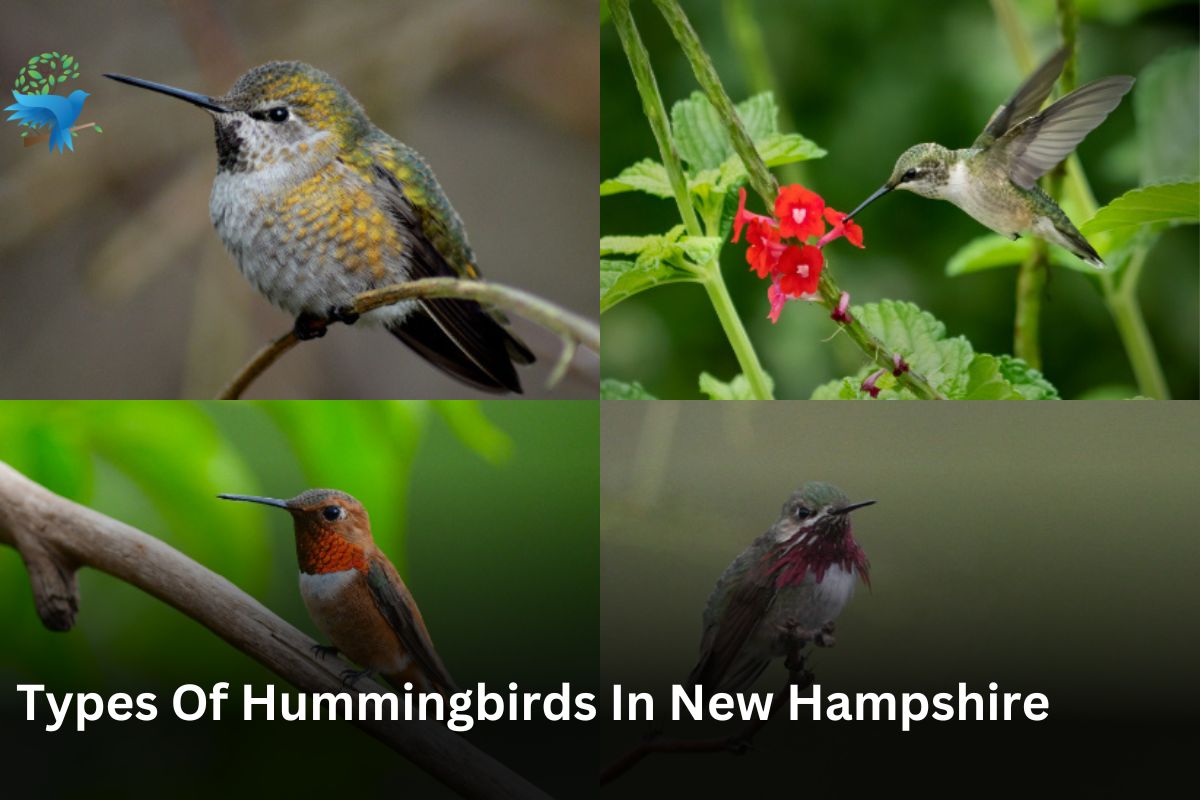
New Hampshire, located in the New England region of the United States, is the 5th smallest state in terms of area. It is characterized by a vast expanse of heavily forested and mountainous terrain, providing a sanctuary to a diverse range of wildlife.
There are a total of 420 bird species in New Hampshire, making it a haven for bird enthusiasts. Among these, 4 species of hummingbirds have been sighted, but only 1 is listed as a regular occurrence on state checklists, while the remaining 3 are considered rare or accidental.
Hummingbirds in New Hampshire
Ruby-throated Hummingbird
Scientific Name: Archilochus colubris
Length: 2.8 – 3.5 inches (7-9 cm)
Weight: 0.1 – 0.2 ounces (2-6 g)
Wingspan: 3.1 – 4.3 inches (8-11 cm)
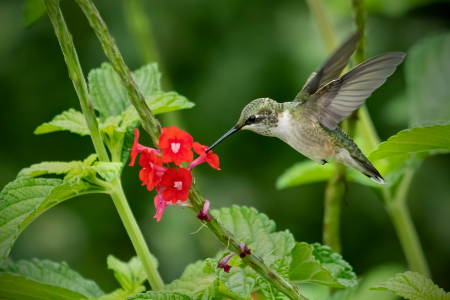
The ruby-throated hummingbird is one of the most common hummingbird species found on the eastern coast of North America, including in New Hampshire. These tiny birds are known for their vibrant green feathers and, as the name suggests, a brilliant ruby-red throat patch on the males.
To identify a male ruby-throated hummingbird, look for its sleek body with bright emerald-green feathers that shimmer in sunlight. The male’s throat is adorned with a flashy red patch that can often appear black or dark when viewed from certain angles.
Females lack the dazzling coloration but still have similar physical characteristics. The female bird displays green back and tail feathers that feature white, black, and grey-green bands.
It is common for the female adult Ruby-throated Hummingbird to be larger than the male and to have a longer bill.
The Ruby-throated Hummingbird is a native of New Hampshire, typically arriving at the beginning of May and departing towards the end of September. Ruby-throated Hummingbirds are the only native breeding hummingbird in the whole of the eastern United States.
During fall, Ruby-throated Hummingbirds embark on their migration journey to the south in August and September. They gather along the Gulf Coast of Texas and start their journey toward their winter destination.
If you want to attract ruby-throated hummingbirds to your yard, setting up a hummingbird feeder filled with nectar will do wonders! Planting flowers such as Petunia, Zinnia, and trumpet vine also act as natural magnets for these little gems.
Fun Fact: Did you know that despite being rather small creatures (about three inches long), ruby-throated hummingbirds undertake an incredible migration journey each year? They travel all the way from Central America across the Gulf of Mexico to breed in various regions along the United States Pacific coast. Talk about impressive!
Rufous Hummingbird
Scientific Name: Selasphorus rufus
Length: 2.8 – 3.5 inches (7-9 cm)
Weight: 0.07 – 0.18 ounces (2-5 g)
Wingspan: 4.0 – 4.5 inches (11 -11.5cm)
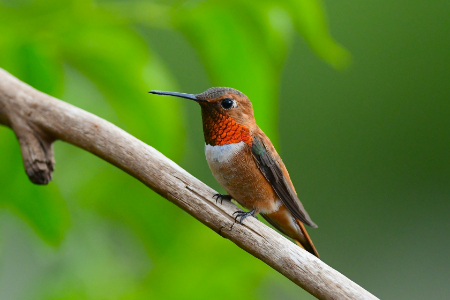
Another exciting visitor among hummers seen occasionally in New Hampshire is the strikingly beautiful rufous hummingbird. Unlike other species mentioned earlier, this particular type hails from western North America and breeds primarily around Alaska and Canada before migrating southward during winter.
The Rufous Hummingbird population in New Hampshire is classified as near-threatened.
So how can you identify a rufous hummingbird? Males sport vivid reddish-orange plumage over their entire bodies except for white-tipped tail feathers sticking out at ends which help distinguish them further while flying around rapidly. In addition, the male adult displays a creamy white color on its abdomen, chest, and throat.
The female of this particular hummingbird species boasts a bronzy-green back and crown, along with iridescent orange streaks on her throat. She also has a whitish chest, reddish-brown sides, and white tips on her dark tail.
Attracting these amazing creatures to your yard can be a challenge since they tend to prefer habitats closer to the Rocky Mountains. However, setting up feeders with nectar specifically suited for rufous hummingbirds might entice them to make a quick stopover on their migration journey.
Rufous Hummingbirds mainly consume nectar from vibrant tubular flowers and insects like gnats, midges, and flies.
Fun Fact: The male rufous hummingbird, considered one of the most aggressive among all hummers, audaciously chases away larger birds.
Calliope Hummingbird
Scientific Name: Selasphorus calliope
Length: 2.8 – 3.9 inches (8 – 9 cm)
Weight: 0.07 – 0.11 ounces (2.3 -3.4g)
Wingspan: 4.1 – 4.3 inches (10.5-11 cm)
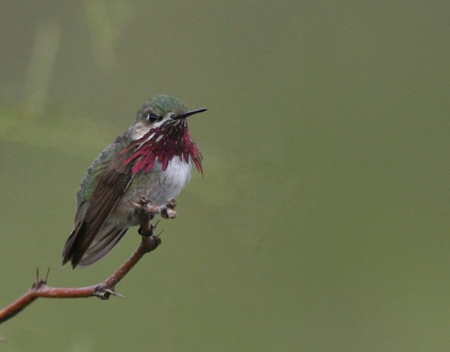
The calliope hummingbird, named after a Greek muse known for her beautiful singing voice, is another enchanting hummingbird species that sometimes graces New Hampshire as it passes through during its long migratory journey.
Identifying these hummingbirds may seem challenging at first glance due to their similarities with other small-sized members of the hummingbird family.
Male calliope hummers boast green upperparts and white underparts splashed subtly with pinkish-red streaks on either side framing throat feathers stippled boldly metallic magenta or maroon hue.
The female adults of this hummingbird species exhibit whitish throats that appear dull and are marked with dark streaks.
On their sides, they display pinkish-white flanks, and their tails have white tips with dark coloration. Additionally, their chests and abdomens are colored in a cinnamon-buff shade.
To attract calliope hummingbirds, consider planting native flowers like bee balm and columbine which are known favorites of this particular species. Providing fresh nectar ensures an inviting oasis during their travels.
Fun Fact: As if being one of the smallest long-distance migratory bird species wasn’t enough recognition, the calliope is also the smallest breeding bird found throughout North America!
Anna’s Hummingbird
Calypte anna
Length: 3.9 in (10 cm)
Weight: 0.1-0.2 oz (3-6 g)
Wingspan: 4.7 in (12 cm)
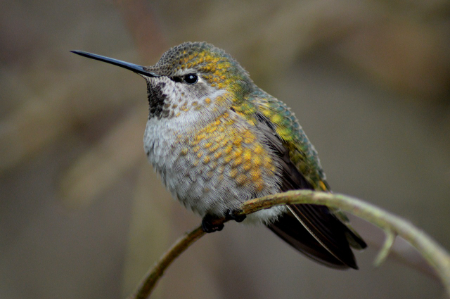
Last but certainly not least is the captivating Anna’s Hummingbird which originates from areas along the Pacific coast, including Central America and Mexico.
Over time, male Anna acquired distinction bearing iridescent olive-green feathers on the forehead and a bright iridescent rose-red range below. The female has a plainer greenish in appearance with a grayish throat and bits of red spotting.
To lure these delightful creatures to your yard, set up feeders containing nectar (one part sugar mixed with four parts water), as they provide a valuable energy source during their migration.
Planting native flowers like salvia and fuchsia also increases the likelihood of attracting Anna’s hummingbirds. Whenever it is obtainable, they consume sugary sap that drips from openings created by sapsuckers.
Fun Fact: Unlike other hummer species, Anna’s hummingbirds are known for performing impressive aerial acrobatics, including daredevil dives from considerable heights before pulling themselves back up!
By adopting strategies tailored for each specific species, you can create an enticing environment that not only attracts various types of hummingbirds in New Hampshire but also adds color and excitement to your garden. So why wait? Get started on creating a welcoming space for these incredible flying jewels today!




